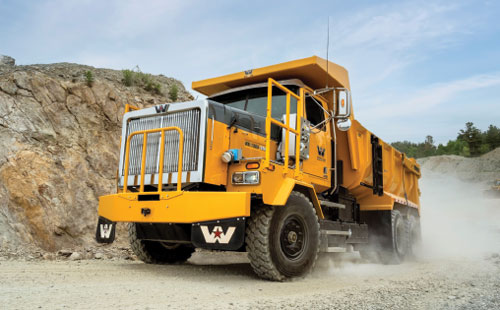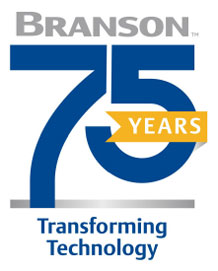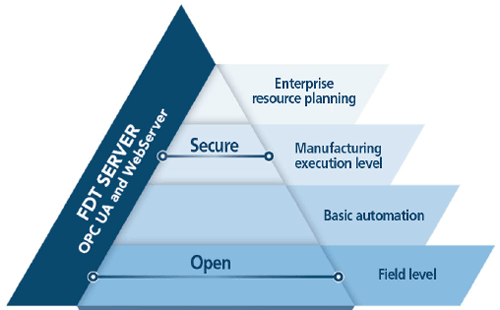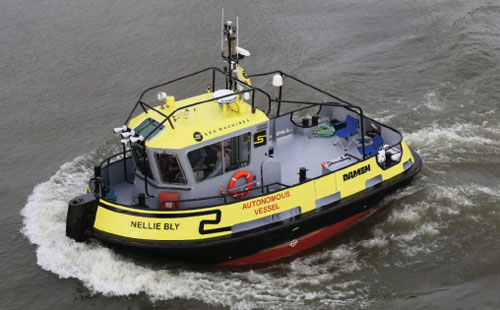- Industry Update
Summary
Pandemic Casts Long Shadow as Labor Shortages Plague Manufacturers, Goal: Net Zero Emissions of Heavy Industrial Machinery, Emerson Celebrates 75 Years of Welding Technologies
- Pandemic Casts Long Shadow as Labor Shortages Plague Manufacturers
- Goal: Net Zero Emissions of Heavy Industrial Machinery
- Emerson Celebrates 75 Years of Welding Technologies
- Jumpstart Fellowship Program Targets Girls for Robotics Careers
- FDT Group Evolves FDT 3.0 Toward Greater Openness
- U.S. Manufacturing Technology Orders Up in July
- Autonomous Operations Come to the Open Ocean
- Rockwell Automation Acquires ASEM
Pandemic Casts Long Shadow as Labor Shortages Plague Manufacturers
The September update of the Manufacturing Industry Output Tracker from Interact Analysis looks at global industry as it moves into a post-COVID phase. “But perhaps use of the phrase “post-COVID” is to some extent premature, as the virus is still presenting challenges . . . and swathes of global industry are still suffering a hangover from the pandemic, with a number of negative factors playing out: vaccine hesitation, semiconductor shortages, and labor shortages being three major drags on sustained recovery,” says CEO and research director Adrian Lloyd.
The struggle to recruit into manufacturing is unexpectedly hitting some big players, says Lloyd. “According to the latest available data, specific regions have been hit hard by labor shortages. The U.S. heads the list, with the U.S. Bureau of Labor Statistics reporting over 800,000 vacancies in manufacturing alone. Meanwhile, in Germany there are close to 150,000 job vacancies in the manufacturing sector, and 68,000 in the U.K. France, on the other hand, reported a mere 5,995 vacancies.”
The temptation is to look at the U.S. first, where vacancies have skyrocketed, but Germany is perhaps more interesting. Traditionally the manufacturing powerhouse of Europe, Germany is currently struggling to reboot its manufacturing sector following the COVID shock. A recent report describes Germany (population 83 million) as a country with an aging population, a low birth rates, and a desperate need for skilled immigrant labor—much as it was at the time of the Gastarbeiter (guest worker) program in the 1960s.
The Federal Labor Agency chairman Detlef Scheele recently said that Germany must attract 400,000 skilled immigrants annually to keep up with demand across all sectors, including industry. This is in spite of the fact that, according to the Organisation for Economic Co-operation and Development (OECD), the country has one of the best-performing vocational education and training systems in the world. Scheele said that the country would have 150,000 fewer working-age residents this year alone. The pandemic had a major part to play, slowing migration and significantly reducing the numbers of skilled immigrants entering the workforce.
Across the pond from Europe, in the U.S., those 800,000+ job vacancies reported in May and June 2021 constitute double the number of vacancies for a similar period going back to 2011. This problem has been exacerbated by the high use of unemployment insurance benefits rather than job retention schemes. But pandemic unemployment benefits are scheduled to stop in quarter four of 2021, so we expect many vacancies to be filled. However, as in Germany, there has been a historical shortage of skilled manufacturing labor owing to an aging workforce. That is because the U.S. has had difficulties in attracting younger people into this sector.
The U.K. is the third major economy where job vacancies are high. The twin shocks of COVID and Brexit have taken their toll here. For either or both reasons, many E.U. workers have left the U.K. and do not intend to return, or cannot return owing to new post-Brexit immigration policies. There has been a resultant serious shortage of haulage drivers—100,000 being an oft-quoted figure, including 25,000 E.U. drivers—and a shortage of factory workers. The result has been a disruption of supply chains, particularly in the food and beverage sector. The Confederation of British Industry (CBI) has reported that general stock levels are at the lowest they have been for 40 years.
Other regions, such as the Asia-Pacific countries, have not suffered from the challenge of labor shortages in the same way as these three, but low vaccination rates and rising COVID infections have continued to slow production. The pandemic is casting a long shadow.
Goal: Net Zero Emissions of Heavy Industrial Machinery
ABB has signed a memorandum of understanding with MEDATech to jointly explore ways to decarbonize mining operations through charging solutions and optimized electric drive systems in battery electric vehicles for heavy-duty applications. The two companies will share expertise and collaborate to reduce the greenhouse gas emissions associated with heavy machinery in mining.

Mining customers require approaches specifically designed for heavy industries so they can electrify their fleets and facilitate the transition to net zero emission transport across mining operations. Electric vehicles and matching charging infrastructure solutions must meet demanding requirements, including high power, automated and safe operation, ruggedized designs for harsh environmental conditions, and approved standards.
ABB launched ABB Ability eMine, an integrated portfolio of electrification and digital systems, to accelerate the decarbonization of the mining sector. MEDATech, located in Ontario, Canada, provides drive train technology to original equipment manufacturers and end users while developing optimization tools to efficiently and cost effectively implement electric fleets.
The ABB Ability eMine offerings can electrify mining equipment used for hoisting, grinding, hauling, and material handling and are integrated with digital applications and services to monitor and optimize energy use. eMine FastCharge will provide high-power electric charging for haul trucks and is currently in the pilot phase. It also incorporates the ABB Ability eMine Trolley System, which can reduce diesel consumption by up to 90 percent.
Emerson Celebrates 75 Years of Welding Technologies

Emerson is celebrating the 75th anniversary of its Branson brand, a name said to be synonymous with ultrasonic technologies for plastics and metal welding, and precision cleaning. The Branson portfolio expanded beyond ultrasonics over the years with nine other material-joining technologies including laser, vibration, and infrared welding.
Emerson marked the anniversary at a new $49 million global headquarters for welding and precision cleaning technologies that opened in January. The new facility will focus on innovation in advanced design, engineering, and joining technologies for complex and fast-growing industries such as medical devices, existing and new bio-based plastics packaging, electric cars, and next-generation batteries.
The Branson brand traces its history to Norman G. Branson, a research engineer who founded a company in Danbury, Conn., in 1946 to harness the power of high-frequency ultrasonic energy for cleaning and degreasing applications as well as nondestructive testing and gauging. But it was ultrasonic welding—developed in 1963 at Branson Sonics and Materials, which was acquired by Emerson Electric Co. (Emerson) in 1984—that represented the real breakthrough for the company and for manufacturing.
“It set in motion a monumental change in the way plastics, and later metals, were joined,” said Vernon Murray, president of Emerson’s assembly technologies business. “We are extremely proud of our history and how we revolutionized the use of ultrasonics in so many remarkable ways.”
Jumpstart Fellowship Program Targets Girls for Robotics Careers

Following a successful pilot run of the MassRobotics Jumpstart Fellowship Program, applications for the second cohort are now open through 1 November. The Jumpstart program provides opportunities for diverse Massachusetts high school girls to learn about careers in robotics. It exposes them to technical skills and develops their professional networks through direct engagement with industry professionals.
This cohort will run from 8 January through 14 May 2022, and will meet on Saturdays, alternating between in-person meetings at the MassRobotics office and virtual sessions. It will also include a full week of sessions and field trips to robotics companies during the February school vacation week.
MassRobotics is the result of the collective work of a global group of engineers, rocket scientists, and entrepreneurs with a shared vision to create a strong, vibrant robotics and Internet of Things ecosystem. The Jumpstart curriculum exposes young women to the many technical skills needed within the robotics industry, from programming to design and simulation, to hands-on building, prototyping, and testing. A key part of the program is making sure these young women feel confident and empowered to enter the STEM field. Students will learn directly from mentors about the different types of robotics jobs and how to leverage their studies into a career in robotics through lab and company visits.
The curriculum includes expertise from MassRobotics’ partners and the Massachusetts robotics ecosystem including SolidWorks, MathWorks, Lightspeed Manufacturing, and GreenSight. The first Jumpstart cohort was made possible through funding and support from The Boston Foundation, Dassault Systèmes’ La Fondation, and Mass Tech Collaborative.
FDT Group Evolves FDT 3.0 Toward Greater Openness
FDT Group continues to evolve its open standard for enterprise-wide network and asset integration as a data-centric platform with its updated FDT 3.0 standard. FDT 3.0 enables an ecosystem of FDT-based solutions to meet demands for Industrial Internet of Things (IIoT) and Industry 4.0 applications by supporting universal device integration, mobility, and remote access.

FDT 3.0 provides the industrial enterprise with native integration of the OPC Unified Architecture (OPC UA), as well as control and web services interfaces for mobile applications. The technology also employs multilayered security to safeguard critical automation information and operating data.
According to FDT Group, FDT 3.0 became platform independent by evolving the fundamental technology on which it was built, moving from a Windows-based .NET Framework to an open .NET core as well as to HTML5 and JavaScript. The use of HTML5-based development will allow FDT to be deployed on a much broader range of devices than in the past.
At the core of FDT 3.0 technology is the new FDT Server, which natively integrates an OPC UA Server for enterprise-wide data access and a web server mobilizing remote operations. FDT 3.0 is closely aligned with the NAMUR NE 175 Open Architecture initiative, which addresses asset monitoring and optimization requirements in industrial processing facilities.
U.S. Manufacturing Technology Orders Up in July
New U.S. manufacturing technology orders totaled $472.6 million in July 2021, according to the latest “U.S. Manufacturing Technology Orders” report published by AMT–The Association for Manufacturing Technology. July 2021 orders saw a slight decrease of 5.6 percent from June but a 41.5 percent increase over July 2020 orders. The year-to-date total was just shy of $3 billion, a 48 percent increase from the total through July 2020.
“The amplified pace of orders over the past several months has injected a degree of confidence into manufacturing not seen since before the pandemic. Increased onshore capacity and diversified supply chains have made lead times more predictable and inventories more consistent, allowing manufacturers closer to end-use customers to justify the capital expenditures we are seeing in this month’s USMTO orders,” according to the report.
“While this is the general trend in manufacturing, there still are industries where supply chain issues remain an impediment, particularly industries whose products rely heavily on computer chips,” the report said.
Autonomous Operations Come to the Open Ocean
Autonomous vehicles navigating warehouse aisles are getting ever smarter at planning their own obstruction-free routes, but a new project named The Machine Odyssey–“harkening to Homer’s Odyssey and the courage to undertake a voyage of discovery and adventure”—plans to take autonomy and remote control to a whole other level. A modern tug, the Nellie Bly, was scheduled to take a 1,000 nautical mile autonomous and remotely commanded journey around Denmark in September and October on a voyage designed to prove that the world’s waterways are ready for long-range autonomy.

American venture-backed, deep-tech startup Sea Machines is providing full onboard vessel control managed by autonomous technology, while operating under the authority of commanding officers located in the U.S. The project intends to show that operators can integrate autonomous technology into their vessel operations, gaining benefits ranging from enhanced safety and reliability to “leaps in productivity and new on-water capabilities.”
The Sea Machines SM300 autonomy system, which has long-range computer vision, uses advanced path planning, obstacle avoidance replanning, vectored nautical chart data, and dynamic domain perception, all to control a voyage from start to finish.
The SM300 will reportedly provide the remote human commanders with an active chart environment of live augmented overlays showing the mission, state of vessel, situational awareness, and environmental data, as well as real-time, vessel-born audio and video from many streaming cameras. Of course, Sea Machines also will stream 24/7 live updates from the sea, the crew, the command center, and more on the Sea Machines website.
Rockwell Automation Acquires ASEM
Rockwell Automation chairman and CEO Blake Moret and his team are transforming the company through acquisition. Moret recently announced the acquisition of ASEM, based in Artegna, Italy, with the goal of combining ASEM’s human-machine interfaces, controllers, remote assistance, and IIoT gateway solutions with software from Rockwell Automation’s open industrial digitalization software platform partner, PTC.
The ASEM acquisition continues the pattern Moret discussed at Rockwell Automation’s annual investor meeting in 2019. “Seamlessly connecting all levels of a business and turning raw data into powerful insights happens when devices are integrated and data is standardized,” said Moret. “No one vendor can do this alone. Instead, companies need an ecosystem of proven partners.”
Deploying PTC software combined with ASEM hardware and software provides a modern distributed control and automation architecture for digitalization and Industry 4.0 projects. The ASEM HMI and edge computers come with CODESYS SoftPLC, delivering IEC 61131-3 open automation systems. ASEM offerings also include Ubiquity, an IEC 62443 certified compliant offering providing secure communications over the Internet. These are open-architecture, intelligent, edge-device building blocks that can be used for Industry 4.0 digitalization.
“Under Blake Moret’s leadership, Rockwell Automation is evolving in many ways, reinventing itself, and pivoting toward new open architectures, system integration business, material handling components, and lifecycle services. It will be quite a cultural change,” says Automation.com’s Bill Lydon.
Reader Feedback
We want to hear from you! Please send us your comments and questions about this topic to InTechmagazine@isa.org.


